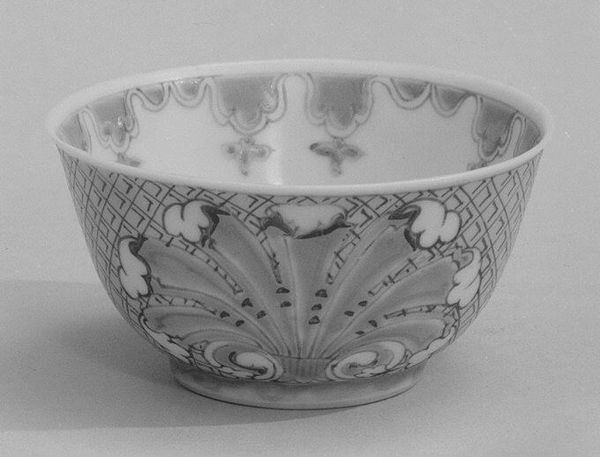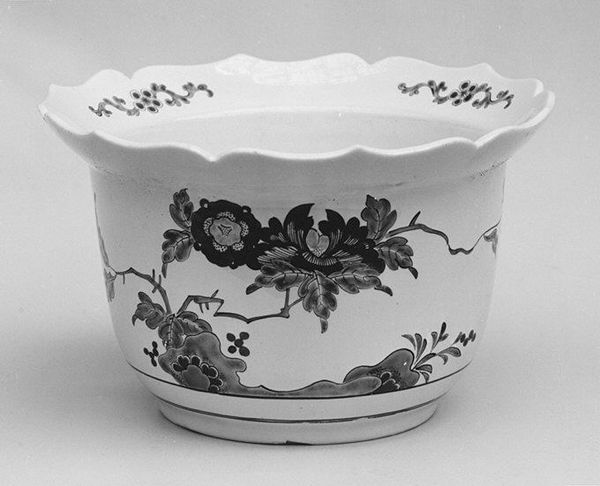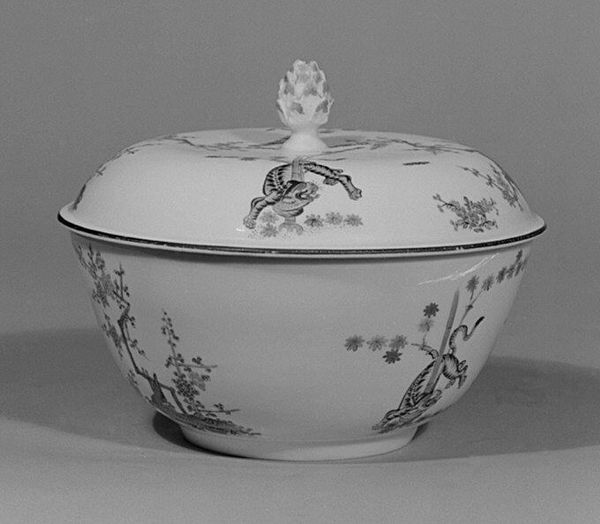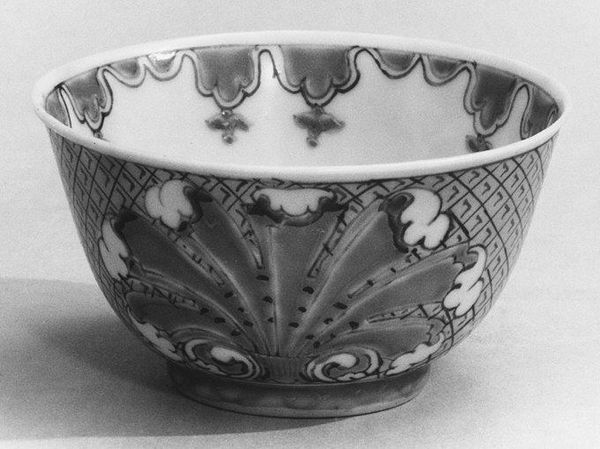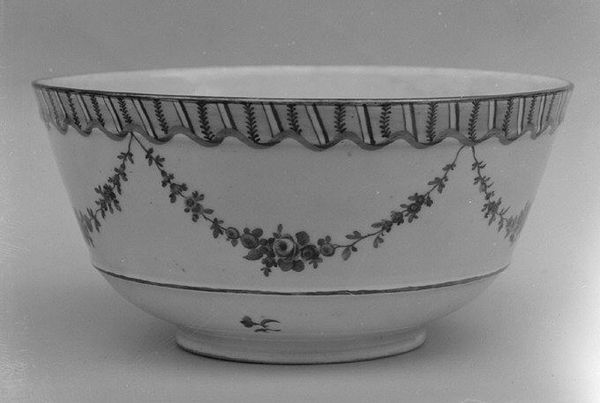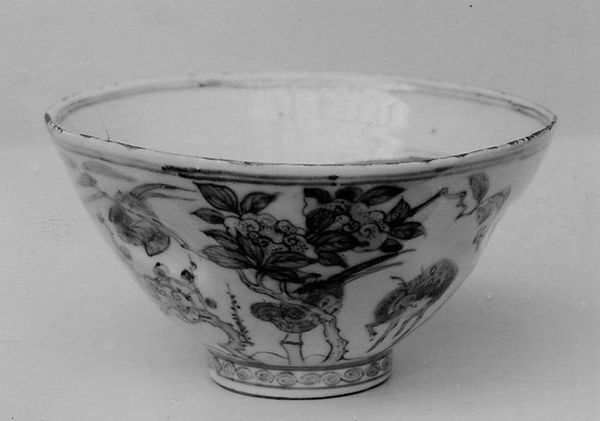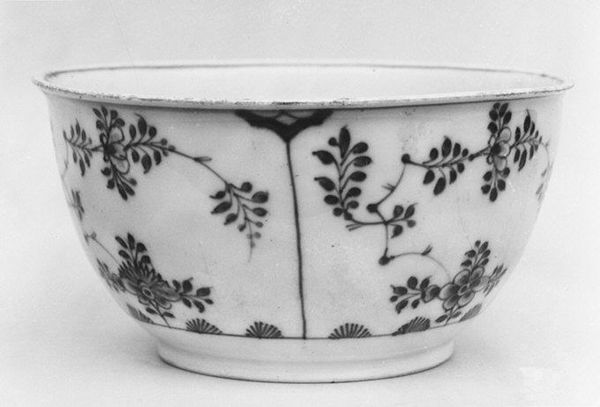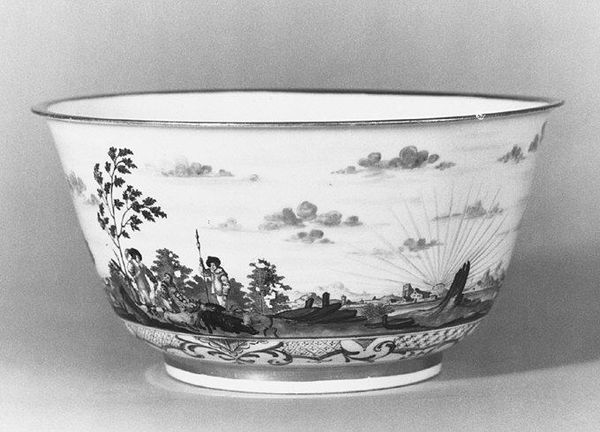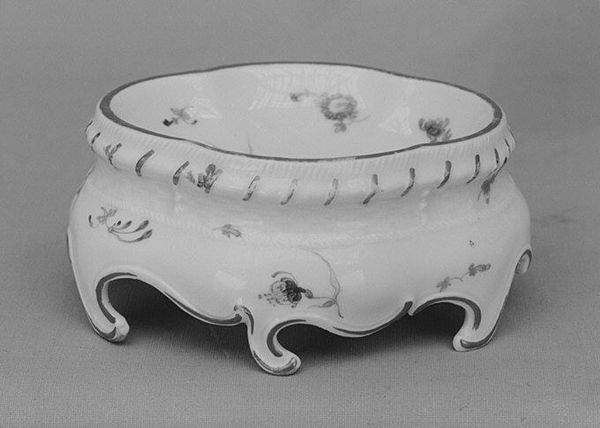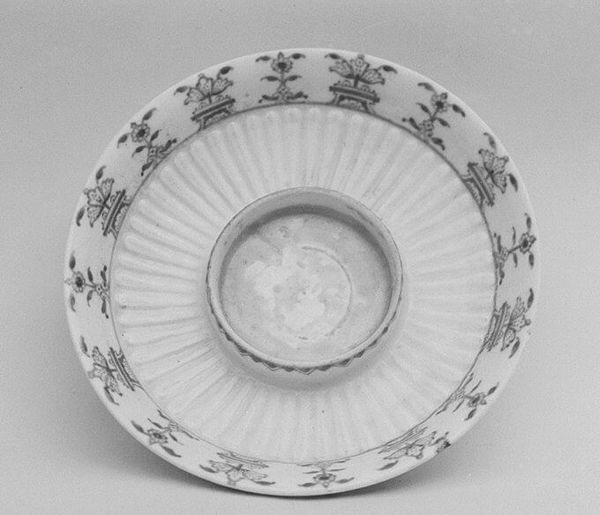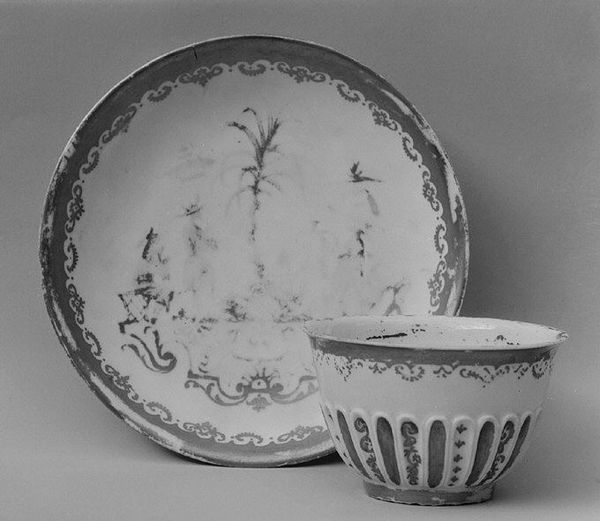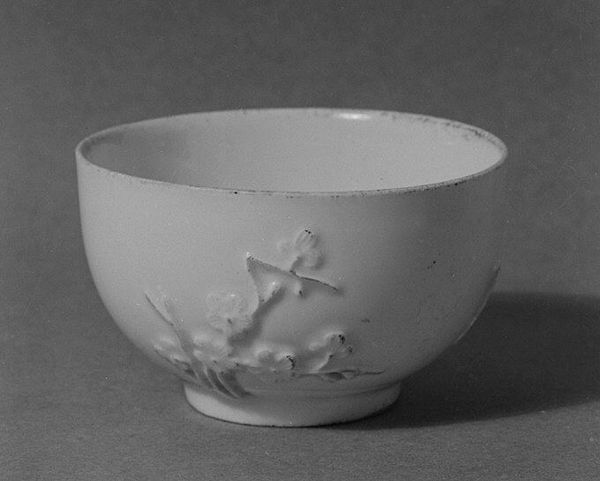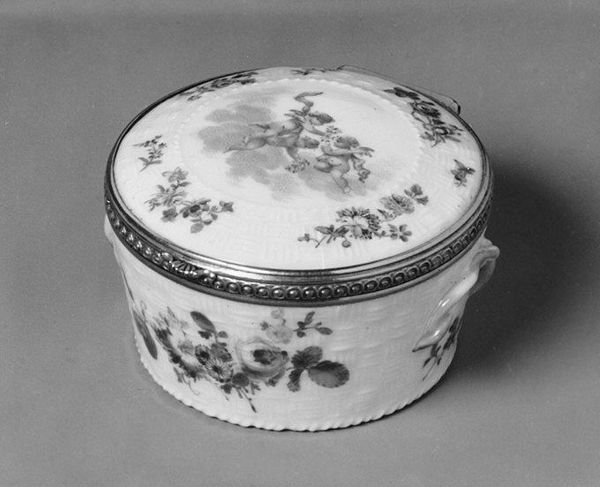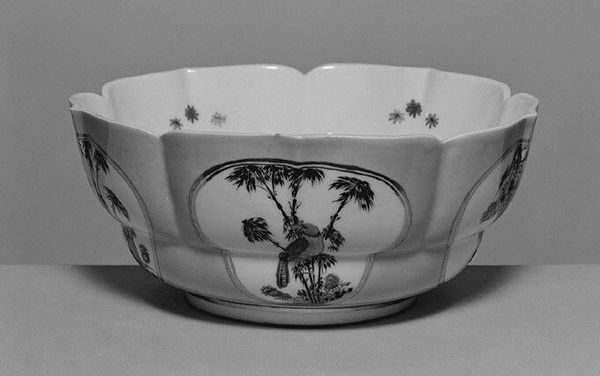
ceramic, porcelain, sculpture
#
asian-art
#
ceramic
#
porcelain
#
sculpture
#
decorative-art
#
rococo
Dimensions: Height: 2 1/4 in. (5.7 cm)
Copyright: Public Domain
Editor: Here we have a porcelain teabowl crafted between 1710 and 1735 by the Saint-Cloud factory. It strikes me as quite delicate and formal, with those neat vertical ribs and floral decorations. What visual elements stand out to you in this piece? Curator: The relationship between the molded fluting and the painted decoration is compelling. Note how the verticality of the fluting is contrasted by the horizontal band of decoration above. Observe too, the strategic placement of floral motifs, almost suspended above small pedestals, how they punctuate the form and draw the eye. How does this structured approach make you feel? Editor: I see what you mean, it feels very balanced, but maybe a bit rigid? Are the materials significant? Curator: Absolutely. The whiteness of the porcelain itself is crucial. Its purity provides a ground against which the applied decoration achieves maximum visual impact. Think of the symbolism inherent in its luminosity, reflecting light and space within its form. How would this affect one’s experience of drinking from it, do you imagine? Editor: I hadn’t considered the porcelain itself as an active element. It creates a beautiful sense of lightness, perhaps elevating a mundane activity. This makes me want to re-evaluate other seemingly "simple" forms in the collection with a greater eye for material properties and how the artists have exploited them. Curator: Precisely. Paying such close attention to an object's formal arrangement will surely reshape how you see everything around you.
Comments
No comments
Be the first to comment and join the conversation on the ultimate creative platform.
